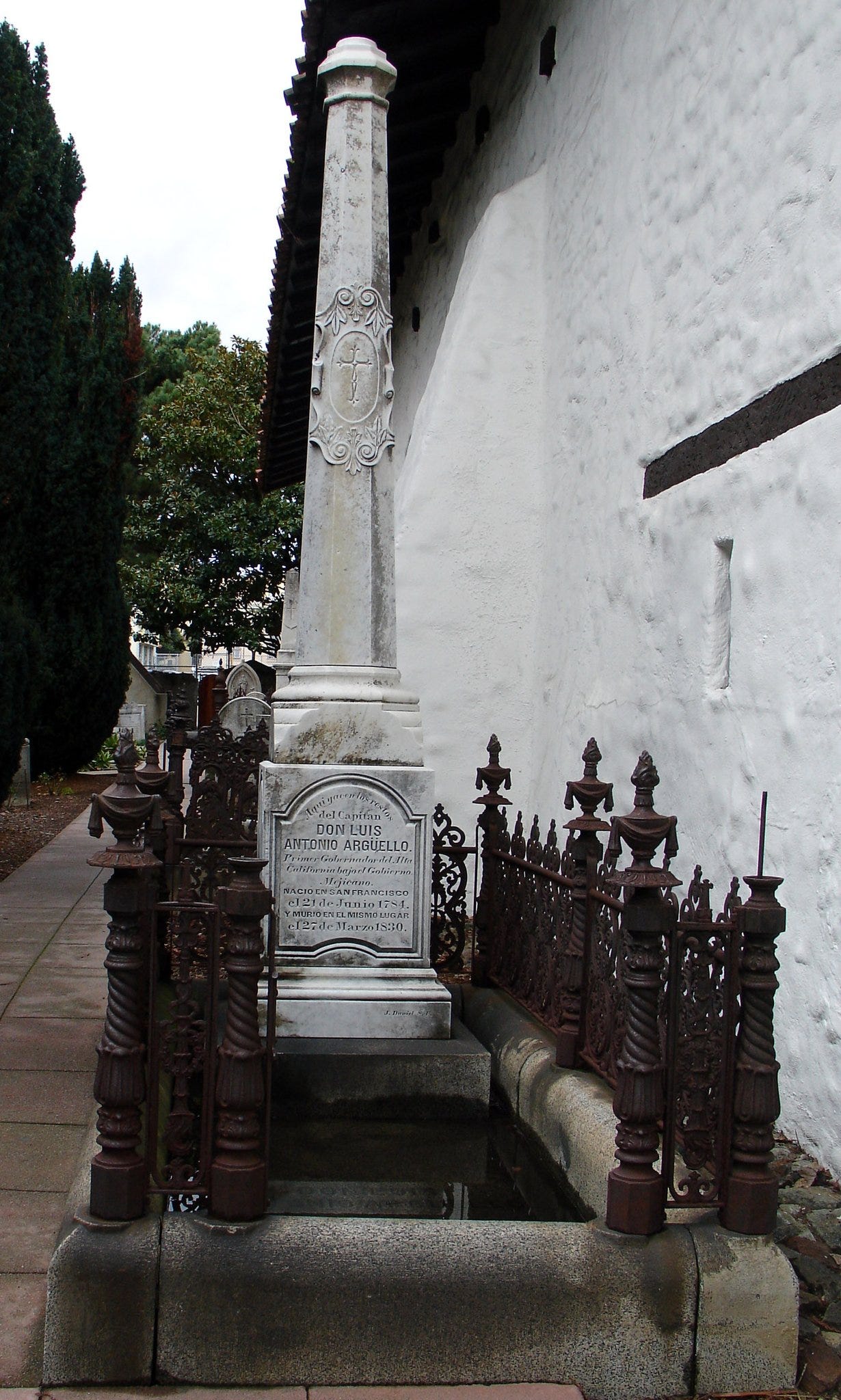"Alvarado and Vallejo credit Argüello with a patriotic refusal to listen to the counsels of Montereyans and the troops who urged him to take advantage of Echeandía's arbitrary order and proclaim revolt."— Hubert Howe Bancroft
In the early months of 1825, California found itself needing a governor. General Juan José Miñón, appointed the year before, had declined the position for reasons lost to history. He never set foot in California, and so, with the territory adrift, a new appointment was required. The choice fell upon Lieutenant Colonel José María Echeandía, a man of intellect and rank, a former director of a college of engineers in Mexico. Now, by the government's decree, the political and military chief of both Alta and Baja California.
His instructions were issued on January 31st, and the appointment was announced by February 1st. Minister Pedraza confirmed the news in a letter to Luis Antonio Argüello, the acting governor of Alta California, who had held the post since the twilight of Spanish rule. Echeandía was to take charge of the distant province, a territory still more frontier than settlement, still more wild than governed.
Echeandía sailed from San Blas in June aboard the schooner Nieves. Some of his officers came separately on another vessel, the Morelos. Still, he remained in Loreto for months, reorganizing affairs in the southern peninsula, issuing new regulations, and appointing a subordinate political chief. It was not until October that he set out for Monterey by land. But the journey proved too difficult—his health wavered, and the hardships of the road bore down on him. Before long, he sent word ahead: Argüello would meet him in San Diego instead.
Argüello first heard of his successor’s arrival on July 4th in a letter from Echeandía dated June 25th, confirming his presence in Loreto. Later, the official notice from Mexico arrived, and soon after, orders followed: he was to travel south to meet the new governor. But Argüello, suffering from his ailments, informed his superiors that he would come only as quickly as his health allowed. Then, on July 26th, he received an order that left little room for interpretation—Echeandía wanted him in San Diego. He boarded a schooner two days later and sailed for the southern port.
By November, the transfer of power was complete. The old governor had stepped aside, and the new one had taken his place. Yet the transition was not without its tensions. The people of Monterey were uneasy about Echeandía’s preference for the south, and it was no secret that Argüello found the shift an unwelcome break from tradition. The city had been the seat of government for decades—why should that change now? Some, including the troops there, murmured that Argüello should resist the order and refuse to recognize Echeandía’s authority. There was talk—whether whispered or spoken plainly—of revolt.
But Argüello would not be drawn into such a scheme. Though he was no doubt displeased, he refused to act against the government in Mexico. History did not record if letters were exchanged in sharp tones or moments of dispute behind closed doors. What is known is that Argüello complied. He stepped aside, and the Californias had a new governor.
Echeandía, meanwhile, stayed in San Diego—not out of rebellion, but out of necessity. His health had suffered from the journey, and he found the climate there more agreeable to his physical ailments. Additionally, San Diego was closer to Loreto, making it easier to govern the whole of the Californias. Moreover, nowhere in his instructions had it been stated that he must reside in Monterey. And so, though no official transfer of the capital was ever declared, the people of the south came to see it that way in time.
The shift did not go unnoticed. In Monterey, the discontent simmered. Some suggested that the move was driven not only by strategy but also by more personal inclinations—a rumor spread that Echeandía had found a particular lady in San Diego to his liking and that she had more sway over him than all his political advisors combined. Whether true or not, more likely true than not according to some accounts, the decision was made. San Diego, not Monterey, would be the governor’s seat.
As for Argüello, he returned north, taking up his old post as comandante of San Francisco. But his time in the public eye was fading. He had done his duty, served as California’s first native-born governor. Though he had not been granted the rank of lieutenant colonel, he remained a respected figure in the territory.
Luis Antonio Argüello was not a revolutionary, nor a man of grand ambitions. He had not sought the governorship, and when his time came to step aside, he did so without force or fanfare. But in the annals of California history, his name stands as that of a man who chose stability over discord, duty over defiance in a time of transition. His was a California not yet a republic, not yet an American state, but a frontier in flux—still ruled by distant powers, still shaped by men who, for better or worse, left their mark.
He lived out his days in relative obscurity, though not without struggles. His health deteriorated, his debts mounted, and his fondness for drink—always present—grew with the years. On March 27, 1830, at 46, he passed away in San Francisco. His widow, Doña Soledad (daughter of Sergeant José Dolores Ortega), inherited Rancho Las Pulgas, where she lived in relative comfort until she died in 1874.

BIBLIOGRAPHY
Hubert Howe Bancroft, The Works of Hubert Howe Bancroft, Volume XX: History of California, Vol. III, 1825-1840 (San Francisco: A. L. Bancroft & Company, Publishers, 1885). Pages 8-13.




